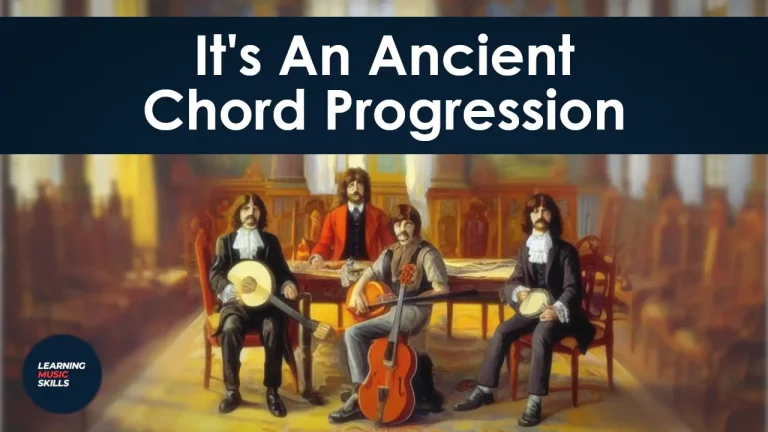Motion Sickness by Phoebe Bridgers is a beautiful, emotional and personal song. It has personal and relatable lyrics that flow smoothly throughout. You would even forget how many songwriting gems and tricks can be found in this song. Let’s find out and let’s get creative!

About Phoebe Bridgers
Phoebe Bridgers is a singer-songwriter born in Los Angeles on August 17, 1994. She began playing guitar and writing songs when she was young and started performing at local places.
In 2017, she released her first album, “Stranger in the Alps.” This is an incredible debut album. It beautifully shows her feelings and thoughts. And her second album, “Punisher,” came out in 2020. This album was a big success.
Phoebe also works with other musicians. For example, she teamed up with Conor Oberst for a project called “Better Oblivion Community Center,” and with Julien Baker and Lucy Dacus for a group called “Boygenius“.
Phoebe’s
Phoebe Bridgers Motion Sickness Meaning
So what is Motion Sickness by Phoebe Bridgers about? It is about her ex-boyfriend, Ryan Adams. She met him when she was 20 years old. He offered to help her with her music career. However, Phoebe says that their relationship was abusive and manipulative. She said that Adams would use his power and influence to control and harass her.
The song expresses Bridgers’ mixed feelings of love and hate for Adams. How he made her feel sick and confused. For example, she sings about how he gave her money to see a hypnotherapist. She only went once and he seemingly didn’t care at all. She also shares how he lied to her about his age, his marriage, and his drug use.
I am not sure what my favourite part of the song is, because the verse is so melancholic. But the chorus on the other hand is very catchy. For instance, she sings: “I have emotional motion sickness / Somebody roll the windows down / There are no words in the English language / I could scream to drown you out”. In this case, motion sickness is a beautiful metaphor for her mixed and hurt feelings.
It’s always nice to know the background story of a song. But to be honest, at the end of the day, every listener relates to the song in a different way. That’s also all that matters. You have your personal story. So whatever it is you have your emotional motion sickness meaning.
Video Tutorial: Phoebe Bridgers – Motion Sickness Song Analysis
If you want to hear all these songwriting techniques with real
Songwriting Technique No. 1: Switching Chorus Lyrics
Lyrics can have a big impact on how somebody perceives your song and if they will continue to listen to it. In the song ‘Motion Sickness’ we have 4 choruses. The first two have identical lyrics, but chorus 3 and 4 are not.
Chorus 3: It is played directly after chorus 2, but the lyrics are completely different. This is smart because this way you avoid having a literal repetition.
Chorus 4: Only the first line of this chorus is the same as chorus 1 and 2. This first line has the most important lyric in it, which is the song title. Because of this one line, the listener perceives it as being a chorus.
One thing to remember is that the first and last lines of any verse or chorus are heavy moments. This means that they stick out to the listener and are remembered more easily.

Songwriting Technique no.2: How lyrics affect the amount of verse bars
A lot of songs nowadays follow a fixed formula of bars in groups of 4. This is not the case with Motion Sickness:
Verse 1 has 13 bars while Verse 2 has 11. Chorus one has 11 bars while the others have 9 bars.
In the verses, the lyrics are responsible for this uneven number. In the verse lyrics, we always have one very short sentence. This is also where one bar is cut out (fig.1).
Verse 1 has two extra bars: one at the beginning and one at the end. In the beginning, the word ‘hate’ is stretched out over an entire bar to maximise its impact (fig.2).
The extra bar at the end of verse 1 and chorus 2, 3 & 4 serves as extra connecting tissue. This gives the different sections more time to breathe(fig.3).
On a final note, chorus 1 has two extra bars of Db. This only occurs once because it creates a smooth transition back to the 3rd verse (fig.4).

Songwriting Technique No.3: Harmonic planning
The song ‘Motion Sickness’ by Phoebe Bridgers is in the key of Db. The intro and verses centre around the tonic it is even confirmed with an IV – V – I progression at the end (fig. ). The chorus accentuates the Gb, which is the unstable subdominant degree. This is done with three tricks.
- Trick one: Gb is the subdominant of Db, but when you reverse it, Db can also serve as the dominant for Gb. This happens between the last bar of the verse and the first bar of the chorus.
- Trick two: In the first three bars we have a movement that feels like an I- V- II – I progression in Gb. Notice also that the difference in duration between the chords accentuates the importance of Gb.
- Trick three: In bars 3 to 5 the Fm chord is only half a step below Gb. This creates a strong pullback towards the Gb.
In the bridge, even more tension is created when it starts to shift between the Ab and Gb, which are the dominant and subdominant degrees.

Conclusion
From the song Motion Sickness by Phoebe Bridgers, we can learn the true impact that lyrics can have. And not only on our listening experience but also on the song structure. This is not limited to a section-by-section basis, but also on the micro level when it comes to the amount of bars.
My main takeaway is how much your lyrics can shape the form and length of your song. They can create interesting and uneven phrase lengths. Which in turn leads to a more interesting song. I think that you’ll agree that Phoebe Bridgers wrote a subtle masterpiece. Motion Sickness seems such an easy song when you listen to it, but there is so much to learn!
And of course, we should not forget the power of smart harmonic planning. Playing around with the right harmonies and harmonic functions can create tension and release between song parts or in an entire piece of
Other song & music analyses
If this analysis was useful and interesting, then check out some of my other songwriting analyses. For example, Tame Impala, The Red Hot Chili Peppers, Foo Fighters, The Beatles and more. If you think a song is missing or if you have a suggestion be sure to let me know!
Suggested Video Tutorial: Tame Impala – The Less I Know The Better song analysis
Your Support Matters
Support new videos by becoming a member and receive benefits in return. Or by giving a one-time donation! Help me provide free
https://www.buymeacoffee.com/musicskills









